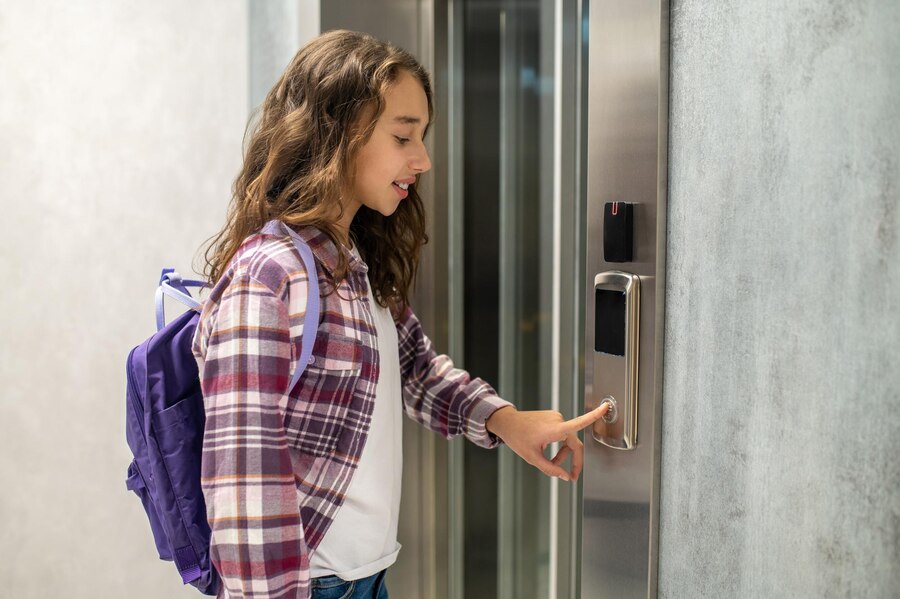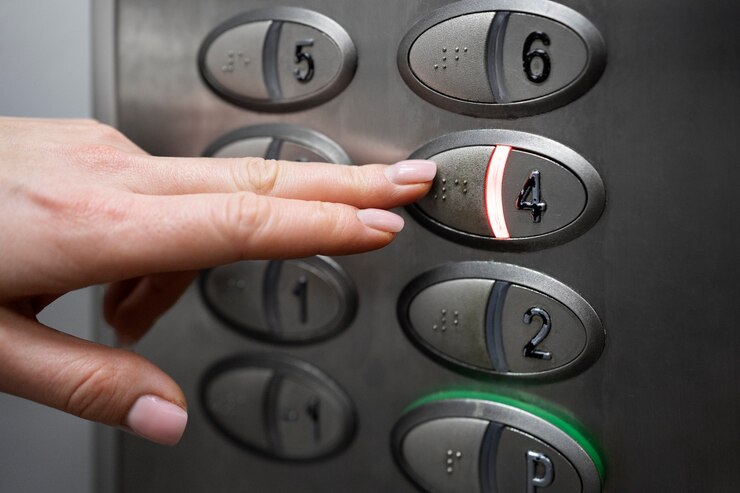
Elevators in today’s residential settings facilitate transportation from one floor to another. They offer a practical mobility solution, especially in multi-story homes. Safety is essential whether you plan to have residential lifts for your house or are in the market to learn about small lifts for houses in Australia. It is essential to comprehend how to have better safety in an elevator so that the lift works properly and safely. In this blog post, we will talk about the given elevator components and why it is necessary to control their working condition regularly.
Important Safety Factors for Elevators at Home
This kind of transportation includes a vast array of safety installations in the construction of elevators to minimize the incidents involving mishaps that may occur to passengers. Before we look at the best types of elevators, let’s analyze some of the basic elevator safety features that should be incorporated into residential lifts.
-
Emergency Stop Button
The most important control in any elevator is the emergency button, usually attached to the elevator’s wall. This button enables a commuter to stop the elevator if there is a problem during its operation. The button is generally located inside the cabin, making access to the button very easy.
-
Door Sensors and Safety Edges
For passengers’ safety, elevator doors have sensors and safety edges that ensure that the doors cannot shut where there is still human traffic. Such sensors are located at the doorway and are responsible for opening the doors if an object or a man is in its way. This feature is essential for preventing accidents involving young children or individuals with limited mobility.
-
Intercom System
An intercom system is usually incorporated in the elevator where passengers can talk to people outside or call emergency services. This system can be beneficial if someone becomes trapped in the elevator or needs assistance. The intercom provides a direct line of communication, ensuring that help can be dispatched quickly.

Structural and Mechanical Elevator Safety
Beyond the essential safety features, elevators for homes are also designed with structural and mechanical safeguards to ensure safe operation.
-
Overload Sensors
Overload sensors are installed in elevators, which shut down as soon as they carry more load than their capacity allows. If the elevator’s capacity is exceeded, the sensors ring the alarm, and the elevator cannot move until the excess is removed.
-
Safety Brakes
Safety breaks are intended to function automatically in case the elevator falls or experiences a problem with the standard braking system. These brakes help stop the elevator safely and as fast as possible to reduce the possibility of the passengers getting injured.
-
Emergency Power Supply
Another unique feature of the elevators is their emergency power supply, depending on when the electricity is turned off. This backup power system enables the elevator to continue to work or, at the least, go down safely. It is essential to guarantee that the passengers are never stuck inside the elevator, especially in case of power failure.
Operational Safety Factor for Elevators
Elevator safety upgrades extends beyond mechanical features, including operational practices that ensure safe usage.
-
Regular Maintenance and Inspections
Maintenance checks are a meaningful way to help maintain an elevator’s safety as it ages. Preventative servicing is a routine process in which the functioning of different parts of an elevator is examined, and necessary repairs are made to avoid failure. Lift maintenance by qualified mechanics prevent vehicle users from suffering costly breakdowns.
-
Certified Installation
A licensed provider should install elevators with proper code adherence to the law. Proper installation also plays a vital role in the appropriate elevator’s safety and efficiency. Certified installers who install such components are well-versed in safety measures.
-
Automatic Return to the Ground Floor
Many elevators have features such as automatic return. Through a button, the elevator is taken to the ground floor in the event of a power failure or an emergency. This means that people can go out safely without being locked on the higher floor in an emergency.

Passenger Safety Features
Basically, Home lift safety features are designed to enhance passenger safety and comfort like:
-
Clear Instructions and Signage
Elevators have clear instructions and signage to guide passengers on safe usage. These may involve directions on how to work on the elevator, what to do in the event of an emergency, and how to work on the different features of the lift.
-
Emergency Lighting
Emergency lighting is a crucial feature in elevators, especially in case of a power outage. This lighting helps passengers see and move safely within the elevator, especially with no power. This feature assists it in reducing the chances of an accident and affords it security during operations at night.
-
Non-Slip Flooring
Most elevators have floors designed to be slip-resistant to reduce incidences of slip and fall-related injuries. This feature is handy in garment parts that may become wet or slippery, such as during a rainy period. The non-slip floor provides passengers with a better surface to stand.
Advanced Safety Technologies
The present elevators are designed with new safety technologies that also help their efficiency and safety.
-
Smart Sensors and AI
Smart sensors and Artificial Intelligence (AI) integration are becoming more common in lift systems. These technologies allow elevators to track and diagnose their status and performance live, thereby identifying any imminent defects. AI is also useful in lift management, increasing profitability by reducing the time people wait for an elevator.
-
Remote Monitoring and Diagnostics
Remote monitoring and diagnosing make it possible for technicians to monitor the operational aspects of an elevator while they are far from the machine. This advanced feature in the technology makes it possible to solve certain aspects before they drastically occur and interfere with the elevator’s functioning. Remote monitoring plays its part in guaranteeing that elevators are always in working order and that few breakdowns require emergency fixing.
Reinforce Lift Safety with SWIFT
Choosing SWIFT as a provider can create a huge difference in achieving the best elevator safety. SWIFT is equipped with a range of safe elevators for homes to ensure your family’s safety is in professional hands. Our commitment to delivering quality lift products and services guarantees that the elevator serves you effectively and safely.
FAQs
These are mainly the safety forms such as emergency stop buttons, door sensors, safety brakes, overload sensors, and emergency power supply systems. These components enable the elevator’s safe operation through ways that prevent accidents.
Elevators should be maintained and checked frequently because of factors such as usage frequency, requirements, and laws that state that they should be checked at least six months or a year. The appointments help spot any problems.
Elevators for passengers with disabilities may contain items like an auditory signal system, buttons with braille, and broader doors to accommodate wheelchairs. All of these features have been specifically tailored to improve the usability and spatial integrity of the station for all patrons.
This makes it possible to troubleshoot the different components of the elevator and realize when any of them are not functioning as they should, hence avoiding the times when the elevator breaks down and only causes an accident.
Some guidelines you have to follow before using an elevator are to check doors for proper functioning, listen for strange sounds, and look for any signs of damage. In case of any challenge, notify the provider for safety and report it to them.
Get In Touch










